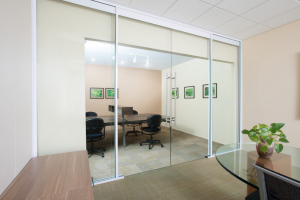
 Since the turn of the millennium, the construction and design industries have concentrated more and more on creating sustainable built environments. The United States Green Building Council (USGBC) has highlighted the benefits of building green with its Leadership in Energy & Environmental Design (LEED) certification program, which was unveiled in March of 2000 and has continued to evolve into the nation’s most recognizable rating system for green buildings. According to the USGBC, 40-48 percent of this year’s new commercial construction will be sustainable. As of August 2015, over 13.8 billion square feet of building space have been LEED-certified. These growing trends can also be seen in building retrofits, where the vast majority of construction projects lie.
Since the turn of the millennium, the construction and design industries have concentrated more and more on creating sustainable built environments. The United States Green Building Council (USGBC) has highlighted the benefits of building green with its Leadership in Energy & Environmental Design (LEED) certification program, which was unveiled in March of 2000 and has continued to evolve into the nation’s most recognizable rating system for green buildings. According to the USGBC, 40-48 percent of this year’s new commercial construction will be sustainable. As of August 2015, over 13.8 billion square feet of building space have been LEED-certified. These growing trends can also be seen in building retrofits, where the vast majority of construction projects lie.
The LEED system continues to bring noteworthy sustainable building projects to the forefront, but achieving certification is not the only pathway to sustainability in the built environment. Values and design choices that support ecological health ultimately determine the level of sustainability in architectural planning. If obtaining LEED certification or meeting the criteria for other green building rating systems are not feasible project goals, the specification of demountable walling is an obvious step towards environmental friendliness. It is this type of exemplary decision making that will have a lasting impact on the planet, regardless of whether certification criteria are met. The diversion of construction waste and reduced use of raw materials are indispensible benefits of utilizing demountable walling in commercial green building applications.
According to the United States Environmental Protection Agency (EPA), 170 million tons of construction and demolition debris were generated in the U.S. about a decade ago, 61 percent of which came from commercial applications. Demountable walling, such as Tranquil Systems’ Access, Seclusion, and Adapt walls, means far less waste will be landfill-bound. The USGBC reports that LEED projects divert over 80 million tons of waste from landfills, and that number is expected to grow to 540 million tons of waste by 2030.
The green building market is demanding an increased supply of green building materials, and an expanded number of suppliers equates to cost savings for project managers. Specification of moveable walls is no longer cost-prohibitive; in many cases, demountable walling results in lower expenditures than those made for the construction of conventional walls. Moreover, these cost-effective walling systems are versatile, durable and aesthetically pleasing. The non-progressive design utilized by Tranquil Systems’ walls means that individual wall panels can be removed to access power and cabling, or for quick replacement if a panel is damaged. Our removable, reusable walls are also acoustically identical to conventionally built walls; privacy is never compromised.
The green building movement is strongly influencing the education, healthcare, and commercial/office industry sectors. Driven by multifarious forces—everything from market demand to federal, state and municipal mandates—the increasing prevalence of sustainable buildings demonstrates the importance of ecological design within the global community. Although LEED is the most widely used green building rating system worldwide, it’s the environmentally minded designers, architects and contractors who have the greatest impact on our planet. Demountable walls bring us one step closer to our concerted sustainability goals.